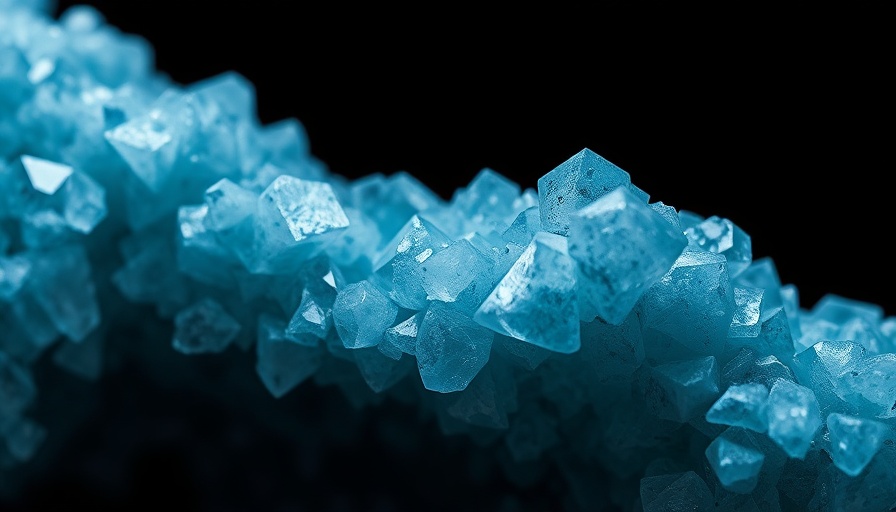
What is Struvite and Why Does It Matter?
Struvite, made up of magnesium, ammonium, and phosphate, is a compound that can wreak havoc in wastewater systems. Its formation poses significant risks in industries reliant on effective wastewater management, such as agriculture and food processing. If not addressed, struvite buildup can not only reduce system efficiency but also result in costly repairs, making understanding this compound essential for plant managers and maintenance teams.
The Formation of Struvite: An Easy Explanation
Think of struvite as a stubborn guest at a party who refuses to leave. It forms when certain ingredients—magnesium, ammonium, and phosphate—come together in specific conditions, like high pH levels and the presence of organic matter. This combination often occurs in wastewater treatment plants and food facilities that manage nitrogen-rich waste. As it builds up, it creates blockages that can harm hardworking machines, leading to higher costs and lower efficiencies.
How Struvite Affects Equipment Performance
Struvite’s presence in pipes and pumps is like a traffic jam—it slows everything down. Here are some telltale signs that struvite might be causing problems:
- Increased energy consumption: When struvite clogs the system, equipment has to work harder.
- Operational downtime: Blocked pipes can lead to equipment failures, causing delays and unnecessary expenses.
- Corrosion and leaks: The abrasive nature of struvite can wear down pipes, leading to leaks that hike repair costs.
Being aware of these signs can help prevent extensive damage and costly repairs.
Identifying Struvite Buildup: Key Indicators
Identifying struvite buildup early is crucial to maintaining system efficiency. Watch for:
- Higher energy bills that signal increased strain on your equipment.
- A noticeable drop in system performance or frequent blockages.
- Signs of corrosion or leaks that indicate pipe wear.
- Increased occurrences of equipment breakdowns, suggesting underlying clogging issues.
Recognizing these symptoms can lead to timely interventions, allowing for more efficient operation.
Effective Prevention Strategies Against Struvite Buildup
Preventing struvite is much easier than dealing with its consequences. Engage in the following strategies:
- Maintain optimal chemical balances: Regularly monitor the levels of magnesium, ammonium, and phosphate in your systems.
- Control pH levels: Keeping pH in check can discourage struvite formation.
- Regular cleaning and maintenance: Implement routine inspections to reduce the likelihood of buildup.
Taking proactive steps can greatly minimize risks associated with struvite and enhance operational efficiency.
Conclusion: Stay Ahead of Struvite Challenges
Understanding struvite and recognizing early signs of buildup can save facilities significant maintenance costs and operational disruptions. As industries continue to evolve, staying informed about this potential issue is a wise strategy to ensure smooth operations and efficient systems.
 Add Row
Add Row  Add
Add 




Write A Comment